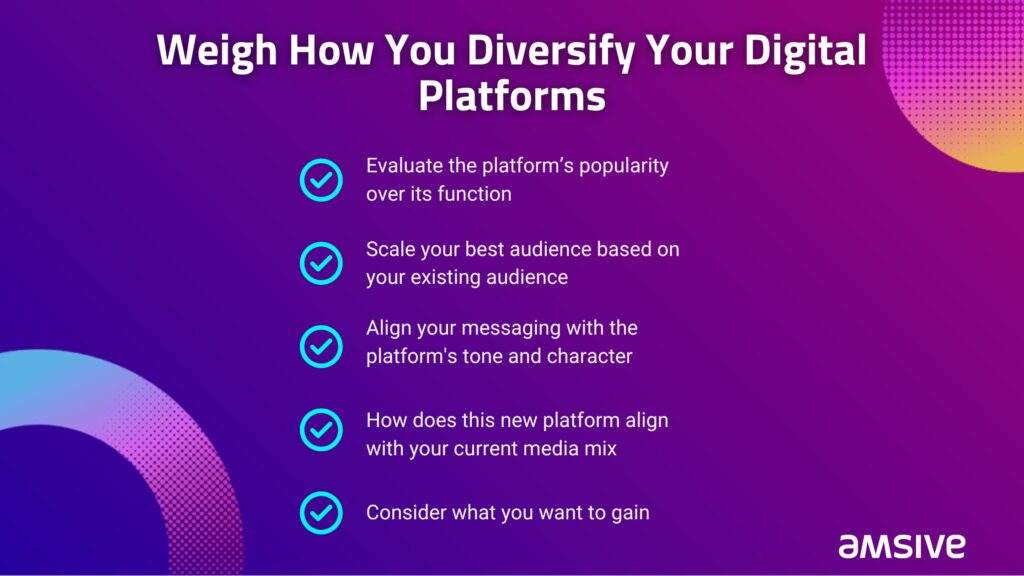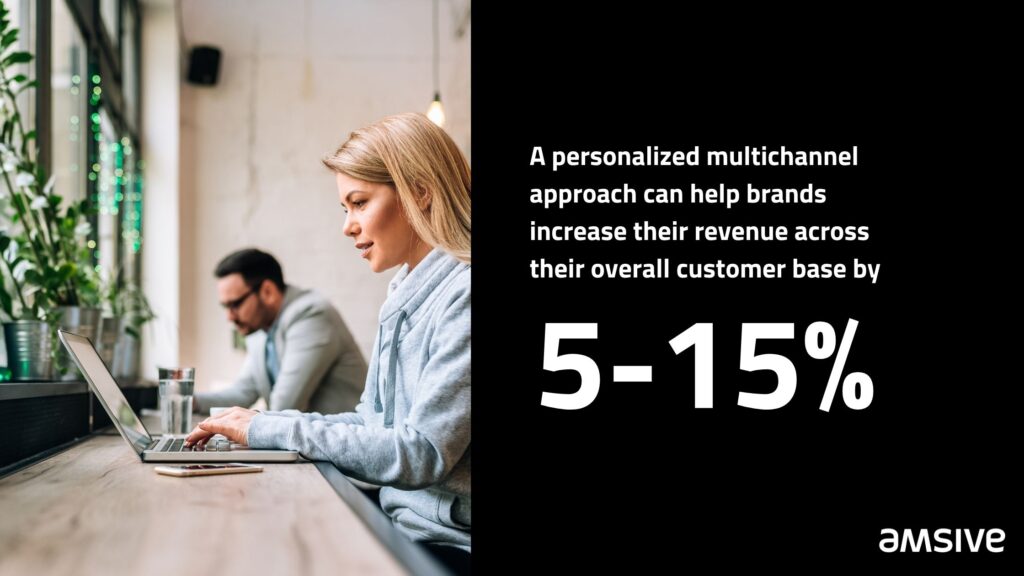Stepping into the new year, businesses are at the crossroads of technological advancements, increased competition, and a looming election year. The forecasts and outcomes of 2023 are an informative backdrop, highlighting some of the advancements and lessons learned.
Much of this year’s anticipation centers around the role of AI and its potential to positively influence revenue and efficiencies. Marketers and consumers alike are also focusing on the importance and evolution of data privacy and transparency, responding to consumers’ heightened awareness regarding using and protecting their personal information.
From direct mail to optimizing personalization across your multichannel approach, we delve into eight different ways you can stay ahead of trends, manage your marketing budget smartly, and drive organizational value to deliver clear results in 2024.
Jump To:
1. Reevaluate Your Audience Strategy
In the anticipated trends of 2024, the spotlight is being turned toward the pivotal role that AI can have when creating audience strategies. Brands and agencies are gearing up to invest in AI platforms that will help propel marketers even deeper into the analytic and strategic refinement defined by AI tools.
Beyond AI’s role in strategy, the importance of data security and transparency is at the forefront of marketers’ minds. Consumers are more wary than ever of their information being used or abused by data brokers. Marketers, conversely, face the challenges of navigating a field where data privacy laws and regulations are constantly in flux.
“The data that you need to know what’s working (and what’s not) lives in many places—first-party databases, walled gardens, and with data partners, to just name a few.”
– Inna Zeyger, Sr. Director, Digital Media
Though no one person or technology can completely predict the future, the use of predictive modeling and advanced analytics can help you sift through the myriad of data and past patterns to identify areas of opportunity.
Reevaluating your audience strategy can help empower businesses to enhance their decision-making processes and formulate sound strategies and solutions. By leveraging predictive modeling and advanced analytics, businesses can more accurately forecast consumer behavior, analyze emerging trends, and identify gaps in product or service offerings. Using these actionable insights will aid in modeling and better understanding consumer behavior while managing risk.
2. Build Up Your Brand
Consumers are increasingly drawn to brands that are authentic, and that vocally share the same core values as they do. As the GenAI landscape continues to evolve and consumers become more eagle-eyed when spotting computer-generated content, they’re seeking out brands with a distinctive and authentic presence. But brands aren’t just expected to interact with consumers in a way that feels and is considered authentic.
Exemplifying your brand values and consistently creating content can increase consumers’ trust in your brand, especially during the upcoming election year. According to Consumer Goods, 75% of consumers have chosen to stop supporting a brand that doesn’t share their values. With heightened consumer scrutiny, a genuine and value-driven approach isn’t just expected for brand loyalty—it’s crucial.
3. Delve into Direct Mail
Using the information that audience solutions and predictive modeling can provide, carry those consumer insights into your direct mail efforts. The wealth of data that Audience Science™ can provide can help you tailor offers to individual recipients based on their prior interactions and preferences. Businesses can use these insights to significantly enhance the relevance and effectiveness of their direct mail materials when framing their marketing efforts.
“Businesses catering to high-value products and services—like financial services, healthcare, education, and other specialized sectors—the tangible aspect of direct mail can heighten engagement and conversion rates.
Incorporating this medium into your strategy can yield transformative results, converting potential leads into loyal customers.”
– Dan Brown, Product Manager
As machine learning and technology continue to advance, so do direct mail capabilities. You can now incorporate QR codes and augmented reality (AR) codes to transform their direct mail into an even more interactive experience. By adding these elements to your printed mailers, the recipients have the option to use their smartphones to unlock additional content—promotions, coupon codes, or virtual experiences.
Overlaying AR codes adds a new dimension to your direct mail by overlaying digital content with your physical materials. This allows marketers to showcase their products in a virtual environment, offer interactive demonstrations, or provide exclusive content that’s only accessible through the mailer.
Finally, consider utilizing Near Field Communication (NFC) microchips to add a layer of interaction that doesn’t require any additional app or content downloads or access to a mobile web browser. These microchips allow your content to be transmitted, using short-range radio waves to instantly engage in an experience on a smartphone.
Structuring your direct mail strategy to include a technology-forward component will have your consumers looking forward to checking their mail.
4. Supercharge Your SEO
Personalization is again a common theme for SEO in 2024. Gaining a deeper insight into users can help you curate a better brand experience. With Google’s increasingly personalized search functions, including Notes and Follow, users can keep up to date with the searches that matter to them. So, how does this affect marketers?
The increasingly personalized optimization of search shows users the most relevant content based on their search terms. Knowing this, aim to optimize your keyword efficiency and find and fill content gaps. Parse through your keyword data to find specific queries and topics in your field that your users may be searching for or interested in. Go beyond your own content and analyze competitors’ content and industry trends to marry your data with your marketing goals.
Once you identify content or keyword gaps, strategically create and optimize that directly addresses those gaps. This could involve in-depth articles, guides, short videos, social content, or other multimedia content that not only answers specific user queries but also offers more comprehensive resources than were previously available. Google’s “Perspectives” feature brings unique perspectives on a given search together. Shown as either a filter or a direct search result, Perspectives compiles comments from consumers, creators, or influencers from various social media platforms. Bringing these commentaries together offers the searcher a more authentic perspective on a given query. Identifying these gaps and areas of improvement early in the year will help curb the likelihood of altering your content plan further down the line.
5. Weigh How You Diversify Your Digital Platforms
Are there platforms you’ve considered adding to your digital media mix? With the election cycle already underway, how will you increase ad efficiency as media becomes increasingly more expensive during this election year? Or are you considering taking advantage of the highly engaged consumers that you may reach through Reddit Ads? Perhaps you’re curious about the growing popularity, speed, and unique targeting capabilities that YouTube Marketing and YouTube Shorts can provide. Whether you’re curious about one of these or all of these, consider how you can connect with prospective customers on new media channels to maximize your advertising impact.
“Why would you want to waste your marketing dollars on someone who doesn’t want to see your messaging in the first place?”
– Allison Olson, SVP, Media Analytics
There are several factors to consider before curating your presence on a new publishing or social platform, including the following:
#1. Evaluate the platform’s popularity against its function
Are you considering creating a brand presence on the platform because it’s the newest and buzziest, or does it support your business and audience goals? If you plan on creating an account simply because everyone else is, you may downplay key considerations like management, efficiency, and resource expenditure.
#2. Scale your best audience on your existing audience
Consider your audience and your buyer personas. Do they already use the platform? To what extent? Is what you can offer them new in this venue, or is it par with the content you’re currently producing? Be strategic and intentional when choosing to add an account to your laundry list of accounts.
#3. Align your messaging with the platform’s tone and character
Before you advertise on a new platform, make sure that you understand its tone and character. Traditional sales ads don’t do well on TikTok. Reddit users respond to humorous, tongue-in-cheek advertising. Social platforms all speak to people in different ways, and it’s important that your business connects with users depending on the platform where they’re receiving your message.
#4. How does this new platform align with your current media mix
Does this new platform make sense alongside your current media efforts? Additionally, does it add more value to that effort? If you’re running TikTok and most of your audience is there, is it worth joining Snapchat just to be on Snapchat? If you’re using programmatic display, running ads on a Google Display campaign wouldn’t be a value-add for your ad efforts. If all you’re doing is pushing awareness channels, go back to your marketing mix and ask: Does this support the customer journey from start to finish, or are there gaps in where we could be engaging with users?
#5. Consider what you want to gain
Are you trying to engage with new consumers, or keep your brand top of mind with your existing customer base? Do you want to experiment with new content forms and cadences? Do you want to drive followers from this new platform to your existing content on another platform? Whatever your answer is, define clear goals before you click that ‘Create account’ button.

6. Strategically Integrate Your AI Use
With the use of GenAI growing in popularity across industries, marketers need to find the balance between authenticity and automation to ensure that their generated content doesn’t ring robotic over the course of the year. According to Hubspot, 85% of marketers say that GenAI has changed the way that they create content.
“As hyper-personalization takes hold, AI tools can assist in continuously refining and optimizing campaign creative, ensuring maximum engagement and amplified results.”
– Leih Boyden, Sr Manager, Content Strategy
GenAI has helped to revolutionize marketers’ speed, variety, and efficiency. 95% of the marketers that use GenAI to help them with copywriting will further edit the copy AI has created. This can range from updating the accuracy of the work to improving the personalization of a given piece of content. Use tools like Zapier and Creatopy to streamline not only your AI output, but to automate your workflow and creative outputs at scale— but don’t forget to review the output for additional brand or personalization opportunities.
7. Engage Users on Your Social Channels
As social media use flourishes, how can you reach new social users while keeping your current followers highly engaged? Don’t discount the power of collaboration with your brand’s users. According to Statista, 70% of brands believe that user-generated content gave them a better connection to their users during 2023. Additionally, consumers have found user-generated content nearly ten times more impactful than standard brand content during their purchasing journey.
User-generated content has been growing in popularity, serving as an auger for public sentiment for a brand or product for over half a decade. In 2018, ads featuring user-generated content received, on average, 73% more positive comments than typical branded content. With the increased emphasis on authenticity and transparency in advertising, consumers are increasingly relying on one another for their experience with a brand or product. User-generated content allows brands to focus on an audience-first approach while maintaining the authenticity that so many consumers cite as a draw when engaging with a brand or considering a product purchase. According to The 2023 Sprout Social Index™, 37% of consumers find a brand more memorable if it prioritizes engaging with its audience over posting a higher volume of content. By leveraging user-generated content, businesses can add a human touch to their social channels and foster a deeper sense of community.
8. Uplevel Your Multichannel Approach
It’s no secret that understanding your audience is the key to optimizing your strategy. It’s not enough to show your message to the right people—you need to optimize your content to appear on the right platform, with the right message, at the right time. When you build a comprehensive market approach, you increase the likelihood of making that happen.
There are a couple of considerations when optimizing your multichannel approach, including:
Identify the right cross-channel touch points: The better you understand how and where your customers interact with our brand, the more likely you are to show them the most optimized version of that message at the right moment.
Personalize your multichannel approach: According to McKinsey, a personalized multichannel approach can help brands increase their revenue by 5%-15% across their overall customer base. Have you seen those results with your personalization efforts? Ensuring that you personalize your multichannel approach throughout your customer’s journey can help you gain new customers and keep them from becoming part of your churn rate.

Take the Next Step
With a wealth of possibilities and technological advancements in front of us in 2024, take the time to identify your priorities for the year. While there may be some instances throughout the year when you need a pivot, setting a solid strategy based on your yearly goals will ensure that you do as little heavy lifting down the line as possible. Remember these key takeaways while planning:
- Leverage AI, predictive modeling, and advanced analytics to build a robust and balanced audience strategy
- Presenting an authentic, value-driven presence can increase consumer’s trust in your brand during times of uncertainty
- Incorporating technology-forward tactics can enhance the relevance and effectiveness of your direct mail
- Identifying content and keyword gaps can offer more extensive resources for your consumers
- A comprehensive understanding of your existing audience can help you scale and create your best audience
- Balance your brand’s authentic voice with automation as you incorporate GenAI into your content
- Incorporating user-generated content can add a human touch and build a deeper sense of community to your business
- Personalizing your Multichannel approach can help ensure that the right form of your messaging reaches your consumer on the right platform at the right time
In a constantly developing marketing landscape, learn more about how predictive modeling can revolutionize your audience strategy, or let’s talk about achieving more for your marketing — and your business.





